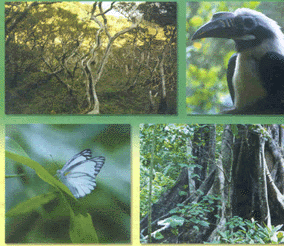 The formation of the Protected Area Management Board (PAMB) ushered
in the participation of local government and peoples’ organizations in park
management. Its creation draws legal basis from the NIPAS Law where the need for an
effective administration of protected areas through the participation and cooperation of
national and local government agencies, private groups and communities is recognized. This
strategy allows the opportunity to integrate the concerns of the aforementioned groups in
the long, medium and short-term development plans of the park, specifically the Mt.
Kanlaon National Park (MKNP). As a result, there are now wider support and greater
mobilization of resources to sustain MKNP management operations.

The PAMB of Mt. Kanlaon has provided a strong foundation in
the overall management of MKNP. They were instrumental in instituting innovative
strategies that would conserve biodiversity in the park. An example is the closure of the
park to trekkers for two years, a move that was challenged by a few mountaineering groups
eventually leading to a legal question. After the decision to temporarily close the park
had been affirmed by the LGUs and other groups, more guidelines were developed including
safety measures. The park was reopened only in the first quarter of 2000. The vegetation
has become lusher and denser with new foliages even covering the trails. More birds are
observed. These are among the results of the two-year closure of Mount Kanla-on Natural
Park to trekkers. For many people, these may hardly be an interesting account but for
those engaged in the persistent drive to conserve biodiversity at Mt. Kanla-on National
Park, these are "small segments" of success stories. To date, a draft Bill known
as House Bill 9152 (MKNP draft Bill) has been approved by the PAMB and endorsed to the
Congress.
basic info | initiative |
strategy |
critical factors | other links |
home
|

